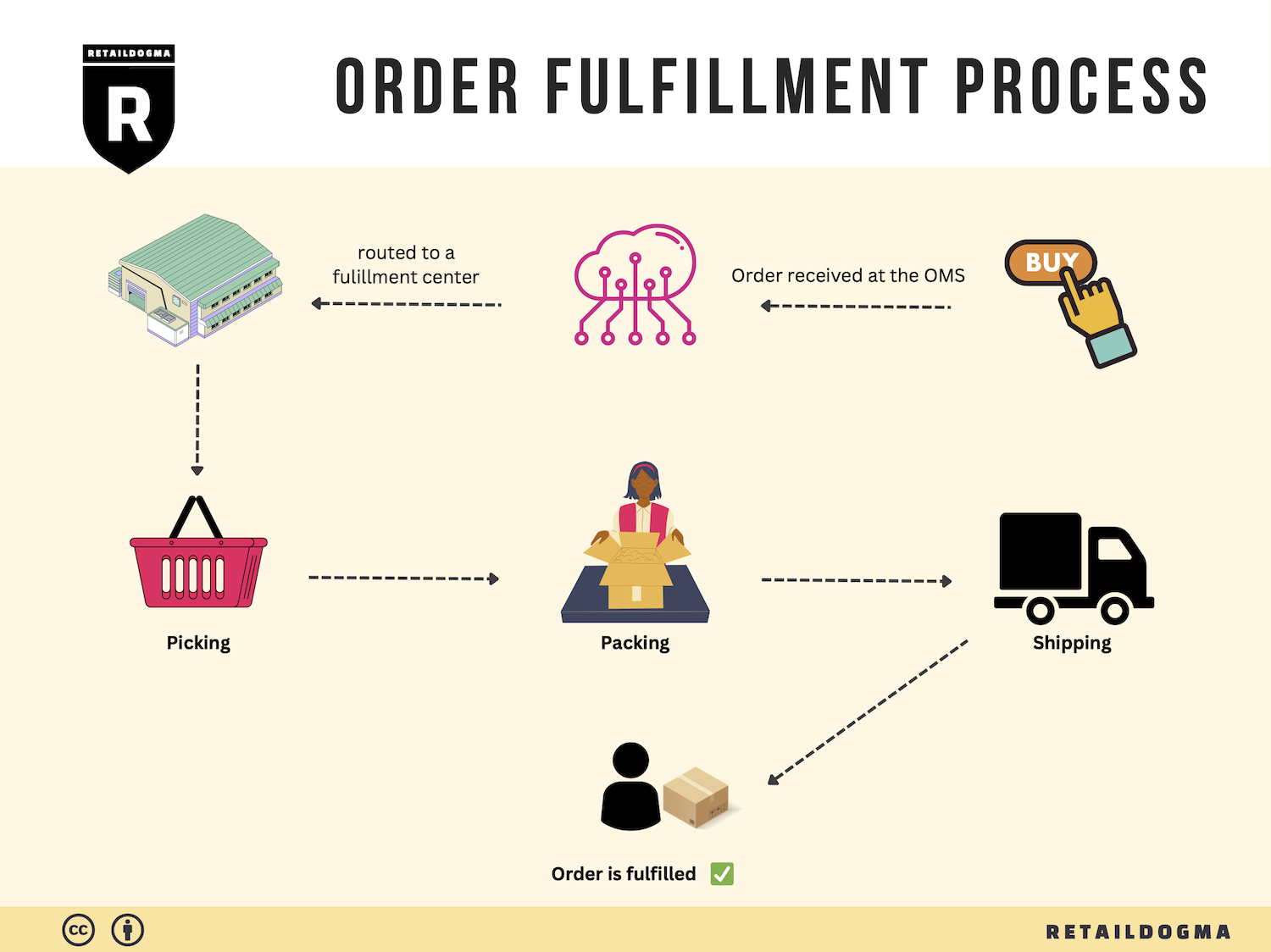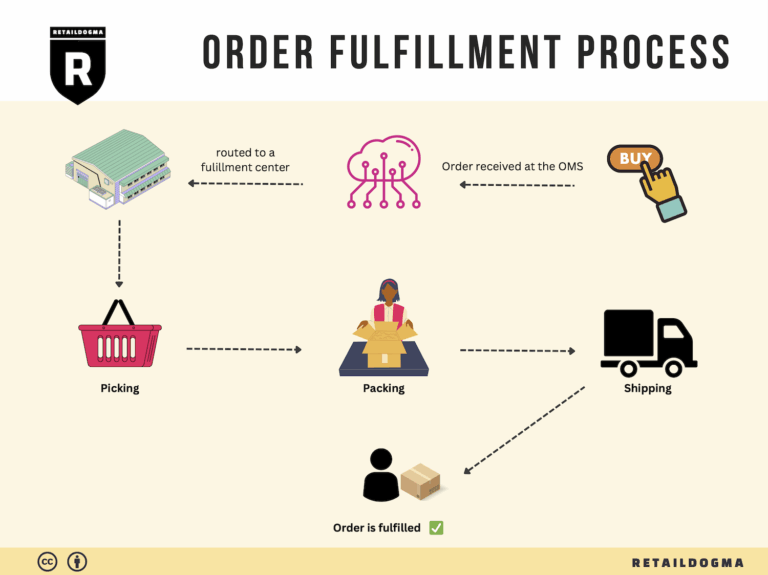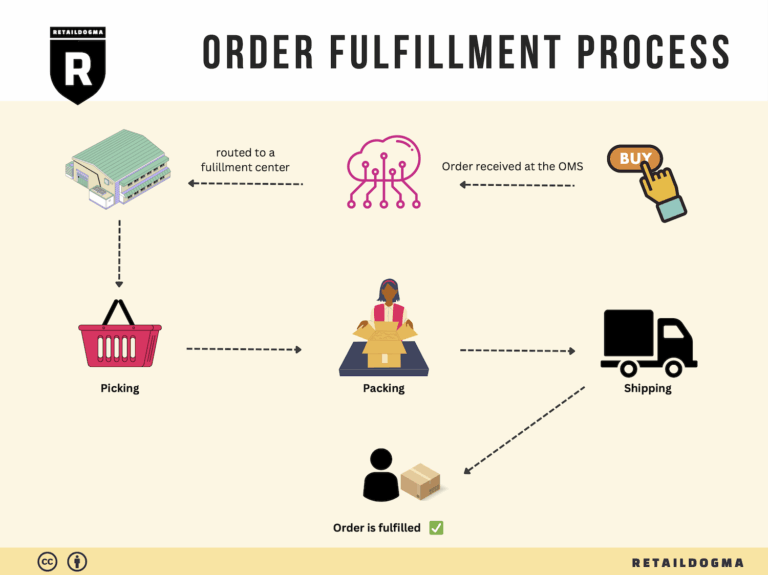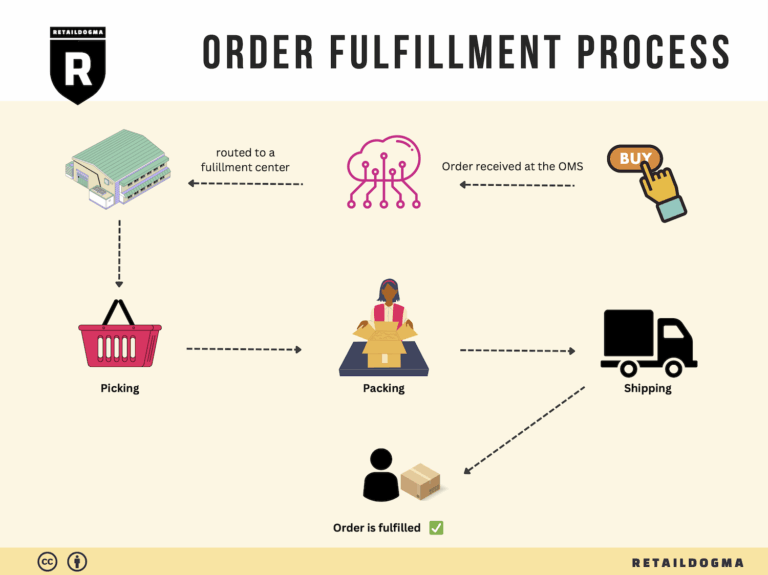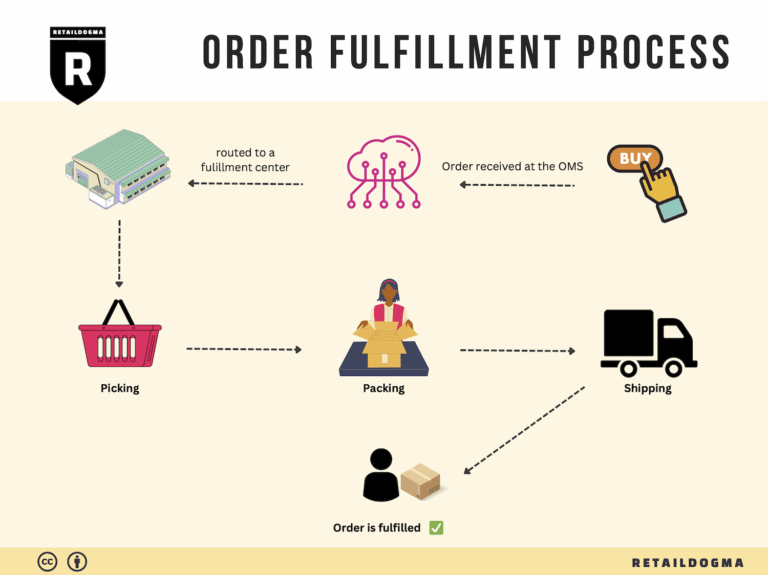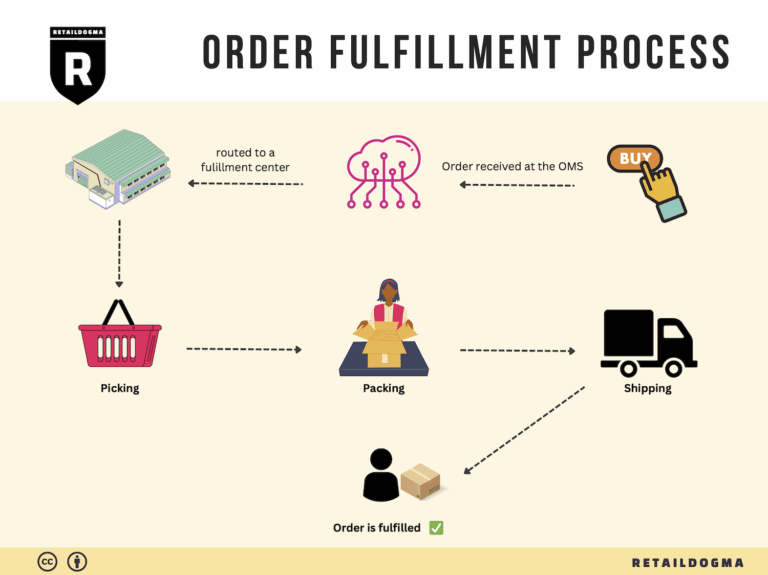Ecommerce Fulfillment Services: The Ultimate Guide (2025)
What is E-commerce Fulfillment? An Introduction for Growing Businesses
Understanding E-commerce Fulfillment: A Critical Component for Growth
As an e-commerce business owner, you’re likely familiar with the challenges of scaling your operations. One of the most common pain points is managing the packing and shipping of orders. As your sales increase, so do the complexities of ensuring that products reach your customers promptly and efficiently. This is where e-commerce fulfillment comes into play.
E-commerce fulfillment is simply the process of getting a product from your inventory to the customer’s doorstep. It encompasses everything from receiving inventory and storing products to processing orders, packing them securely, and shipping them out. For growing businesses, understanding and optimizing this process can mean the difference between success and stagnation.
In this guide, we will explore various fulfillment models that can support your business as it expands. You’ll learn about Third-Party Logistics (3PL) providers and Fulfillment by Amazon (FBA), each offering unique benefits tailored to different business needs. For instance, 3PL partners like JW Fulfillment offer comprehensive logistics solutions that include warehousing, order management, and shipping, allowing you to focus on your core business activities.
We will also cover the core services involved in e-commerce fulfillment. This includes not only storage and shipping but also inventory management, returns processing, and customer service support. Each component plays a vital role in ensuring customer satisfaction and operational efficiency.
Choosing the right fulfillment partner is crucial. In this guide, we will provide practical tips on what to look for in a logistics partner, such as their technology capabilities, service offerings, and geographical reach. Understanding these factors will empower you to make informed decisions that align with your business goals.
Finally, we will delve into pricing structures, helping you understand the costs associated with various fulfillment options. By breaking down the pricing models, you’ll be better equipped to budget and forecast your logistics expenses effectively.

The ultimate goal of this guide is to empower you with the knowledge to make smart decisions about your logistics strategy. With the right fulfillment approach, you can not only streamline your operations but also enhance customer satisfaction and drive growth in your e-commerce business.
What You’ll Learn In This Guide
- What is E-commerce Fulfillment? An Introduction for Growing Businesses
- The Order Fulfillment Process: From ‘Buy’ Button to Customer’s Door
- Comparing Fulfillment Models: In-House vs. 3PL vs. Dropshipping
- A Deep Dive into Amazon FBA: Pros, Cons, and Who It’s For
- Core Services Offered by Fulfillment Centers
- How to Choose a Fulfillment Partner: A 6-Point Checklist
- Understanding Fulfillment Pricing: A Breakdown of Common Fees
- Frequently Asked Questions (FAQs) about Fulfillment
- Conclusion: Is Outsourcing Fulfillment the Right Move for Your Business?
- Important Disclaimer
The Order Fulfillment Process: From ‘Buy’ Button to Customer’s Door
1. Receiving Inventory
The first step in the order fulfillment process is receiving inventory. This involves the systematic acceptance of goods into the warehouse after they have been shipped from suppliers. When products arrive, they are checked against purchase orders to ensure that the correct items and quantities have been delivered. This step is crucial as it prevents discrepancies and ensures that inventory levels are accurately maintained.
Importance: Effective receiving procedures help minimize errors and ensure that the inventory is ready for the next stages of fulfillment. This accuracy is essential for maintaining operational efficiency and customer satisfaction.
Key Term: SKU (Stock Keeping Unit) – A unique identifier assigned to each product, which simplifies tracking and inventory management.
2. Warehouse Storage
Once the inventory has been received and verified, the next step is warehouse storage. This involves strategically placing the products in designated storage areas within the warehouse, often using a warehouse management system (WMS) to optimize space and accessibility. Products may be stored on shelves, pallets, or in bins, depending on their size and the warehouse layout.
Importance: Proper storage solutions enhance the efficiency of the order fulfillment process by making it easier to locate and retrieve products when needed. Well-organized storage also helps in minimizing the time spent searching for items, thereby reducing overall operational costs.
Key Term: FIFO (First In, First Out) – A method of inventory management where the oldest stock is sold first, ensuring that products are not expired or become obsolete.
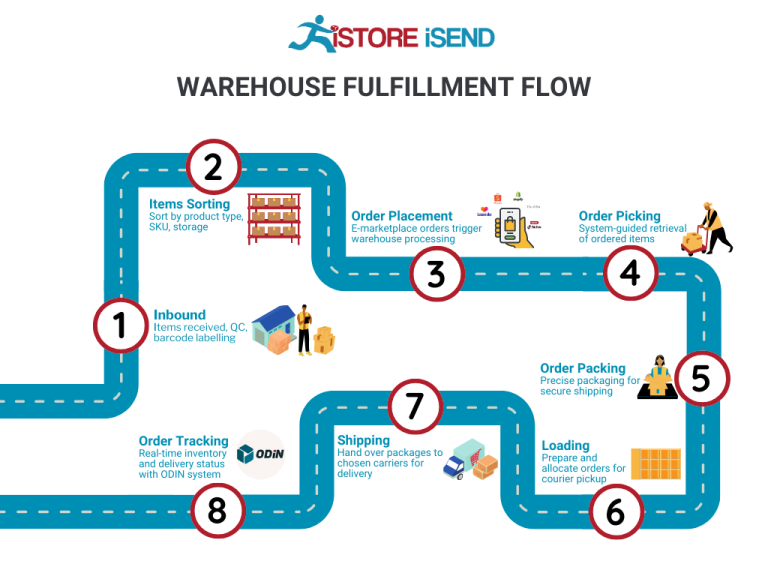
3. Order Picking
After a customer places an order, the next step is order picking. This process involves selecting the right items from storage to fulfill the order. Pick lists, which detail the items and quantities needed for each order, guide warehouse staff during this stage. Depending on the volume and type of orders, various picking methods can be utilized, including single order picking, batch picking, or wave picking.
Importance: Efficient order picking is vital to ensure that orders are fulfilled accurately and promptly. Errors during this stage can lead to customer dissatisfaction and increased costs associated with returns or replacements.
Key Term: Pick List – A document or digital display that outlines the items to be picked for fulfilling customer orders, often optimized for efficiency.
4. Order Packing
Once the items have been picked, they move to the packing stage. Here, products are carefully packaged to ensure they are protected during transit. Packing involves selecting appropriate packaging materials, such as boxes, bubble wrap, or packing peanuts, and labeling the packages with shipping details. This step may also include quality checks to ensure that the right items are packed and that they meet quality standards.
Importance: Proper packing is essential for minimizing damage during shipping and ensuring that products arrive in good condition. Well-packed orders also enhance the customer experience and can contribute to positive brand perception.
Key Term: Packing Slip – A document included in the package that lists the contents of the shipment, serving as a reference for both the customer and the fulfillment center.
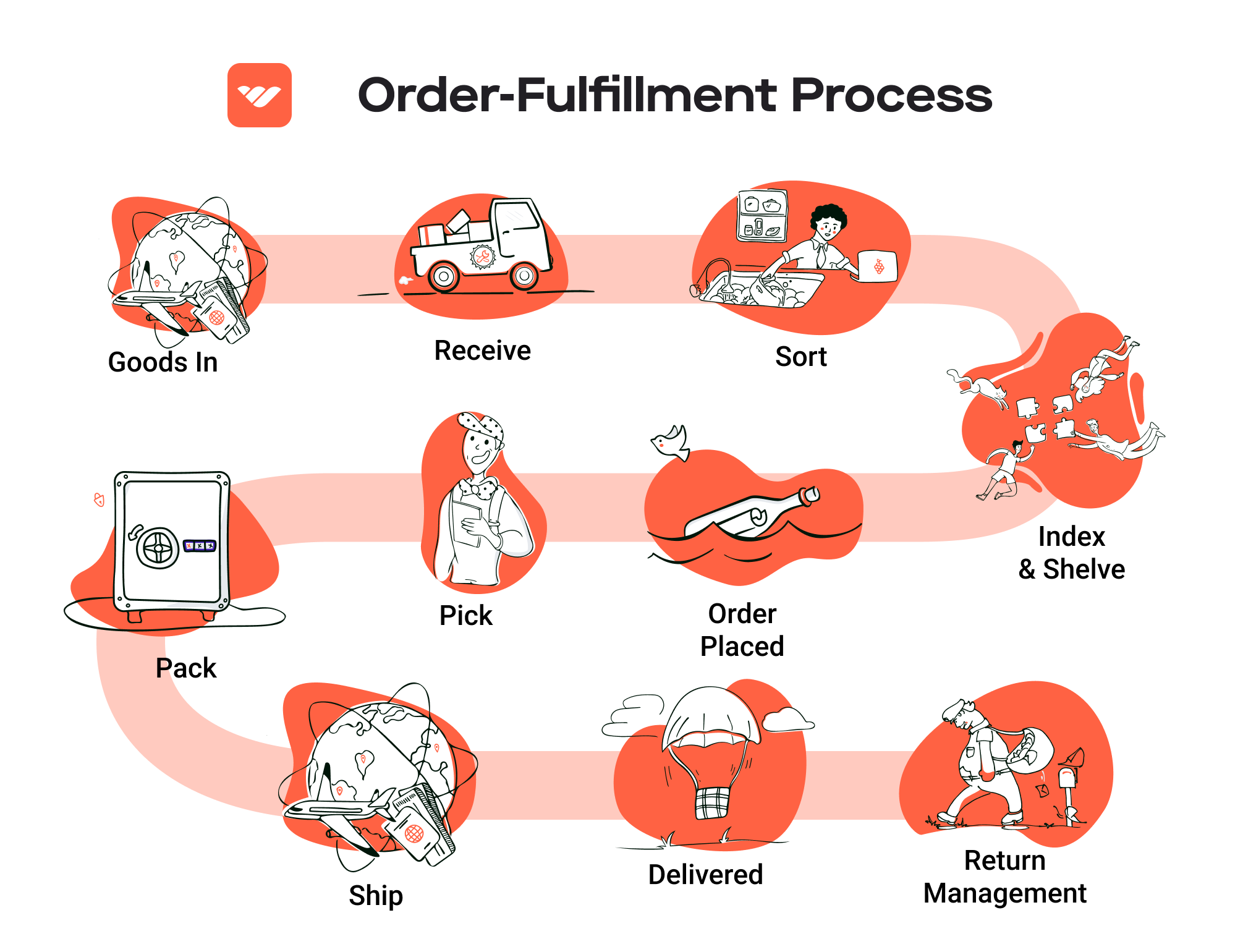
5. Shipping & Delivery
The final step in the order fulfillment process is shipping and delivery. Once orders are packed, they are handed over to a shipping carrier for delivery to the customer. This step involves selecting the best shipping method based on factors like cost, delivery speed, and destination. Tracking information is typically provided to customers, allowing them to monitor their shipment’s progress.
Importance: Timely and reliable shipping is critical for maintaining customer satisfaction and trust. The shipping process can significantly impact the overall perception of the e-commerce business, and efficient logistics operations can lead to repeat customers.
Key Term: Last Mile Delivery – The final step of the delivery process where the package is transported from a distribution center to the final delivery destination, often representing a significant portion of shipping costs and service challenges.
By understanding and optimizing each step of the order fulfillment process, e-commerce businesses can enhance their operational efficiency, reduce costs, and ultimately improve customer satisfaction. Implementing best practices in receiving, storage, picking, packing, and shipping will enable businesses to scale effectively and respond to market demands with agility.
Comparing Fulfillment Models: In-House vs. 3PL vs. Dropshipping
Comparison of Fulfillment Models
| Model | Who Handles Inventory | Best For (Business Stage) | Key Advantage | Key Disadvantage |
|---|---|---|---|---|
| In-House Fulfillment | The Business | Established Businesses | Full control over inventory and processes | High overhead costs and operational complexity |
| Third-Party Logistics (3PL) | A Third-Party Provider | Growing Businesses | Scalability and reduced logistical burden | Less control over inventory and processes |
| Dropshipping | Supplier | Startups and Small Businesses | Low startup costs and minimal risk | Lower profit margins and dependency on suppliers |
In-House Fulfillment
In-house fulfillment involves managing the entire logistics process within the company. This includes handling inventory, warehousing, order processing, and shipping. Businesses that opt for this model typically own their warehouse space and staff, providing them with complete control over their operations. This model is best suited for established businesses that have already developed a customer base and have the resources to invest in infrastructure.
The primary advantage of in-house fulfillment is the ability to customize the process to meet specific business needs, ensuring that the service level aligns closely with customer expectations. Companies can implement their own quality control measures and respond quickly to market changes. However, the disadvantages include high overhead costs associated with maintaining warehouse space, staffing, and technology, which can be burdensome for smaller businesses or those with fluctuating demand. Additionally, managing logistics can become complex and time-consuming, diverting focus from core business activities.
Third-Party Logistics (3PL)
Third-party logistics (3PL) providers, like JW Fulfillment, offer businesses the opportunity to outsource their fulfillment processes. This model is ideal for growing businesses that need to scale quickly without the heavy investment in infrastructure. 3PL providers manage inventory, warehousing, order processing, and shipping, allowing businesses to focus on marketing and sales.
One of the key advantages of utilizing a 3PL provider is the scalability it offers. As order volumes increase, a 3PL can quickly adapt to meet demand without requiring significant capital investment from the business. Additionally, 3PL providers often have established relationships with shipping carriers, which can lead to better shipping rates and faster delivery times. However, the trade-off is that businesses relinquish some control over their inventory and fulfillment processes. Any issues with fulfillment can directly impact customer satisfaction, and it may take time to establish strong communication and reliability with the 3PL provider.
Dropshipping
Dropshipping is a fulfillment model where the retailer does not hold inventory but instead transfers customer orders directly to a supplier, who then ships the products to the customer. This model is particularly attractive for startups and small businesses with limited resources, as it requires minimal upfront investment and significantly lowers financial risk.
The primary advantage of dropshipping is the low barrier to entry. Entrepreneurs can start an e-commerce business without the need for a warehouse or large inventory purchases. This allows them to test products and markets with little financial commitment. However, dropshipping also comes with challenges, such as lower profit margins due to reliance on suppliers and potential shipping delays that can affect customer satisfaction. Additionally, businesses are often at the mercy of their suppliers regarding product availability and quality, making it essential to choose reliable partners to ensure a positive customer experience.
Conclusion
Each fulfillment model presents unique advantages and disadvantages that can significantly impact the operations and growth of an e-commerce business. In-house fulfillment provides control and customization but comes with high costs and complexities. Third-party logistics (3PL) offers scalability and reduced operational burdens, making it ideal for growing businesses, but at the cost of some control. Finally, dropshipping is a low-risk entry point for startups but can lead to lower profit margins and dependency on suppliers. Understanding these models will help business owners and operations managers make informed decisions that align with their growth objectives and operational capabilities.
A Deep Dive into Amazon FBA: Pros, Cons, and Who It’s For
Understanding Fulfillment by Amazon (FBA)
Fulfillment by Amazon (FBA) is a service offered by Amazon that allows sellers to store their products in Amazon’s fulfillment centers. Amazon takes care of storage, packaging, and shipping of products, allowing sellers to focus on other aspects of their business. This service has become increasingly popular among e-commerce businesses looking to scale their operations.
How FBA Works
-
Set Up Your FBA Account: Sellers first need to create an Amazon seller account and enroll in the FBA program. This includes providing necessary business information and linking a bank account for payments.
-
Prepare Your Products: Sellers must prepare their products according to Amazon’s guidelines. This includes labeling items, packaging them correctly, and ensuring they meet Amazon’s quality standards.
-
Ship Products to Amazon: Once the products are prepared, sellers ship them to Amazon’s fulfillment centers. Amazon provides sellers with shipping labels and instructions on how to send their inventory.
-
Storage: Amazon stores the products in their warehouses until an order is placed. Sellers can monitor their inventory levels through their seller account.
-
Order Fulfillment: When a customer places an order, Amazon picks, packs, and ships the product on behalf of the seller. This includes handling customer service and returns.
-
Payment: After the sale, Amazon deducts their fees and disburses the remaining funds to the seller’s account.
Pros of Using Amazon FBA
Prime Eligibility
One of the most significant advantages of using FBA is that products become eligible for Amazon Prime. This not only increases the visibility of products but also attracts a large customer base that values fast and free shipping. Prime membership is a powerful driver of sales, as many consumers prefer to purchase items that are available with quick delivery options.
Customer Trust
Products fulfilled by Amazon carry a level of trust and reliability that can enhance a seller’s reputation. Customers often feel more secure purchasing items that are backed by Amazon’s customer service and return policies. This trust can lead to higher conversion rates and customer loyalty.
Multi-Channel Fulfillment
FBA allows sellers to use Amazon’s logistics capabilities to fulfill orders from other sales channels. This means that if a seller sells on their website or other platforms like eBay, they can still utilize Amazon’s fulfillment network. This integrated approach streamlines operations and can reduce overall fulfillment costs.
Scalability
FBA is designed to support growth. As demand for products increases, sellers can easily scale their inventory without needing to invest in their own warehousing and logistics infrastructure. Amazon’s extensive network allows sellers to reach customers globally, making it easier to expand their business.
Cons of Using Amazon FBA
High Fees
While FBA can simplify logistics, it comes with various fees that can eat into profit margins. Sellers need to pay for storage fees, fulfillment fees, and other additional charges. These costs can add up, particularly for slow-moving inventory or during peak seasons when storage fees may increase.
Strict Inventory Rules
Amazon has strict policies regarding inventory management. Sellers must adhere to guidelines for product preparation, labeling, and storage. Failure to comply can result in additional fees or even the suspension of selling privileges. This can be particularly challenging for sellers with diverse product lines or those who are new to the platform.
Commingling Risks
When using FBA, products from different sellers can be stored in the same location, a practice known as commingling. This can pose risks if a seller’s product is damaged or if counterfeit items are mixed in with their inventory. If a seller receives negative feedback due to issues with commingled inventory, it can affect their overall seller rating and future sales.
Limited Control Over Fulfillment
By relying on Amazon for fulfillment, sellers give up some control over the customer experience. Issues such as shipping delays, packaging quality, and customer service are handled by Amazon, which can lead to dissatisfaction if things do not go as planned. Sellers may find it challenging to maintain their brand’s unique voice and customer service approach.
Who is FBA Best For?
FBA is particularly beneficial for small to medium-sized e-commerce businesses looking to scale quickly without the upfront costs associated with warehousing and logistics. It is ideal for:
- New Sellers: Those just starting out can leverage Amazon’s vast infrastructure to reach a larger audience without the complexities of managing logistics.
- Businesses with High Sales Volume: Sellers with established products that have steady demand can benefit from the efficiencies that FBA offers.
- Brands Seeking Global Expansion: Companies looking to enter international markets can utilize FBA’s global reach and expertise in cross-border logistics.
- Sellers of Large or Oversized Items: FBA is well-suited for those dealing with heavy or bulky products that are often challenging to ship and store.
In conclusion, while FBA offers numerous advantages that can significantly enhance an e-commerce business’s growth potential, it is essential for sellers to weigh these benefits against the associated costs and risks. By understanding the nuances of the FBA program, businesses can make informed decisions that align with their operational goals and customer service standards.
Core Services Offered by Fulfillment Centers
Inventory Management & Warehousing
Effective inventory management is a cornerstone of successful e-commerce operations. Fulfillment centers, like JW Fulfillment Inc, provide comprehensive warehousing solutions that enable businesses to store their products in a secure and organized environment. This service includes tracking inventory levels, managing stock replenishment, and ensuring optimal storage conditions for various product categories, from consumer electronics to apparel.
The benefits of robust inventory management are multifaceted. First, it minimizes the risk of stockouts or overstock situations, which can lead to lost sales or increased holding costs. By employing advanced Warehouse Management Systems (WMS), fulfillment centers can offer real-time visibility into inventory levels, allowing e-commerce businesses to make informed decisions about purchasing and sales strategies. Furthermore, centralized warehousing can lead to reduced shipping times, as products are strategically located closer to key markets, enhancing customer satisfaction through faster delivery.
Pick and Pack Services
Pick and pack services streamline the order fulfillment process, ensuring that e-commerce businesses can efficiently deliver products to their customers. This service involves selecting the correct items from inventory (picking) and packaging them appropriately for shipment (packing). Fulfillment centers utilize trained staff and technology to handle these tasks swiftly and accurately.
The advantages of pick and pack services are significant. For one, they reduce the workload on e-commerce businesses, allowing them to focus on marketing and sales rather than logistics. Additionally, efficient pick and pack operations enhance order accuracy, which is crucial for maintaining customer trust and satisfaction. With the ability to process large volumes of orders during peak seasons, fulfillment centers help businesses scale their operations seamlessly without compromising service quality. This capability is particularly vital for businesses participating in high-traffic sales events, as it ensures they can meet increased demand without delays.
Kitting and Assembly
Kitting and assembly services offered by fulfillment centers provide an added layer of customization for e-commerce businesses. This service involves grouping individual items into ready-to-ship sets or kits, which can be particularly useful for promotional bundles, gift sets, or subscription boxes. Fulfillment centers take on the responsibility of assembling these kits, ensuring that all components are included and packaged correctly.
The primary benefit of kitting and assembly is the ability to enhance product offerings without significant investment in additional infrastructure. By outsourcing these processes, e-commerce businesses can quickly adapt to market trends and consumer preferences, launching new products or bundles with minimal lead time. Moreover, kitted products often attract higher perceived value, encouraging customers to make purchases. This service also simplifies inventory management, as businesses can track kits as single units rather than multiple individual items, streamlining stock management.
Returns Management (Reverse Logistics)
Returns management, often referred to as reverse logistics, is an essential service that fulfillment centers provide to e-commerce businesses. This service encompasses the entire process of handling returned products, from receiving and inspecting items to restocking or disposing of them as necessary. Effective returns management is crucial for maintaining customer loyalty and ensuring a smooth post-purchase experience.
The benefits of a well-structured returns management system are profound. First, it helps businesses recover value from returned items, whether through restocking or refurbishing. This process minimizes losses associated with returns, which can be significant in the e-commerce sector. Additionally, a hassle-free returns process can significantly enhance customer satisfaction, leading to increased repeat purchases and positive word-of-mouth marketing. Fulfillment centers often provide insights into return trends, allowing e-commerce businesses to identify and address issues with specific products or categories, ultimately improving product offerings and reducing return rates.
In summary, the core services offered by fulfillment centers, such as inventory management and warehousing, pick and pack services, kitting and assembly, and returns management, are integral to the success of e-commerce businesses. By leveraging these services, businesses can streamline their operations, enhance customer satisfaction, and position themselves for scalable growth in an increasingly competitive market.
How to Choose a Fulfillment Partner: A 6-Point Checklist
Location & Warehouse Network
Importance:
The geographic location of your fulfillment partner and their network of warehouses is crucial for efficient shipping and delivery. A strategically located warehouse can reduce shipping times and costs, significantly impacting customer satisfaction.
Questions to Ask:
– Where are your warehouses located, and how many do you operate?
– Do you have facilities in the regions where my primary customer base is located?
– How do you manage logistics for cross-border e-commerce?
– Can you provide information on your shipping partners and methods?
Technology & Integrations
Importance:
In today’s digital landscape, a fulfillment partner’s technology capabilities are vital for seamless operations. Robust technology allows for real-time tracking, inventory management, and order processing, which are essential for maintaining efficiency and transparency.
Questions to Ask:
– What warehouse management system (WMS) do you use?
– How does your technology integrate with major e-commerce platforms like Amazon, eBay, or Shopify?
– Can you provide API access for real-time data exchange?
– How do you ensure data security and compliance with regulations?
Specializations (e.g., Cold Storage, Oversized Items)
Importance:
Different products require different handling and storage solutions. If your business involves specialized products such as perishables, oversized items, or fragile goods, it’s important to partner with a fulfillment provider that has the necessary capabilities.
Questions to Ask:
– What types of products do you specialize in handling?
– Do you have facilities for temperature-sensitive items or oversized products?
– How do you manage inventory for specialized items?
– Can you accommodate seasonal fluctuations in demand for specific product categories?
Scalability & Capacity
Importance:
As your business grows, your fulfillment needs will evolve. A partner that can scale operations quickly and efficiently can help you meet increased demand without compromising service quality.
Questions to Ask:
– What is your current capacity, and how do you plan to expand it?
– Can you handle peak season demands and sudden spikes in order volume?
– What strategies do you use to ensure that you can scale operations in line with my business growth?
– How do you handle inventory overflow or excess stock situations?
Pricing and Contracts
Importance:
Understanding the pricing structure and contract terms is essential for maintaining profitability. Hidden fees can eat into margins, so clarity upfront can help avoid surprises later.
Questions to Ask:
– What is your pricing model (e.g., per order, per item, monthly fees)?
– Are there any hidden fees for services like storage, returns processing, or special handling?
– What are the contract terms, and is there flexibility for renegotiation as my business evolves?
– Do you offer volume discounts or incentives for long-term contracts?
Customer Support & Reviews
Importance:
Reliable customer support can make or break your fulfillment experience. A partner with strong support will help resolve issues quickly and efficiently, ensuring that your operations run smoothly.
Questions to Ask:
– What customer support channels do you provide (e.g., phone, email, live chat)?
– What are your support hours, and do you offer 24/7 assistance?
– Can you provide references or case studies from existing clients?
– How do you handle complaints or service disruptions, and what is your typical response time?
Conclusion
Choosing the right fulfillment partner is a pivotal decision for scaling your e-commerce business. By carefully evaluating potential partners using this checklist, you can ensure that you find a provider who aligns with your operational needs and growth objectives. Each point addresses critical aspects that can influence your logistics performance, customer satisfaction, and overall business success.
Understanding Fulfillment Pricing: A Breakdown of Common Fees
Initial Setup Fees
Initial setup fees are one-time charges incurred when you start working with a fulfillment provider. These fees can cover a variety of services, including account setup, onboarding, software integration, and the configuration of inventory management systems.
The calculation of initial setup fees varies by provider and can depend on the complexity of your operations. For example, if you require extensive customization of the software or if you have a large volume of products to integrate, the setup fee may be higher. It’s essential to clarify what services are included in this fee to avoid unexpected costs later.
Receiving Fees
Receiving fees are charged when your inventory arrives at the fulfillment center. These fees typically cover the labor costs associated with unloading, inspecting, and entering the inventory into the warehouse management system (WMS).
Receiving fees can be calculated on a per-unit basis or based on the total weight of the shipment. For instance, some fulfillment centers might charge a flat fee for every pallet received, while others may charge per item. Understanding how your provider calculates these fees can help you anticipate costs, especially if you plan to send large shipments frequently.
Storage Fees (per pallet/bin)
Storage fees are ongoing charges that accumulate based on the amount of space your inventory occupies in the warehouse. This fee can be calculated per pallet or per bin, depending on how the fulfillment center organizes its storage.
Typically, storage fees are billed monthly, and rates can vary significantly based on factors such as location, type of product, and demand for storage space. For instance, premium locations or facilities with climate control may charge higher storage fees. To optimize costs, assess your inventory turnover rates; high-turnover products might justify premium storage, while slower-moving items may require a more economical option.
Pick & Pack Fees (per item/order)
Pick and pack fees are charged for the labor involved in picking items from the shelves and packing them for shipment. These fees are typically calculated on a per-item or per-order basis.
For example, a fulfillment center may charge a fixed fee for picking and packing each order, which includes the cost of materials such as boxes, packing tape, and labels. Alternatively, some providers might have tiered pricing based on the volume of orders processed. Understanding these fees is crucial as they can significantly impact your overall fulfillment costs, especially if you experience fluctuations in order volume.
Shipping Fees
Shipping fees cover the costs associated with transporting your products to customers. These fees can vary widely based on factors such as the shipping method (standard vs. expedited), package weight, dimensions, and destination.
Fulfillment providers often have negotiated rates with carriers, which can lead to cost savings for your business. However, it’s vital to understand how these fees are calculated, as they can include additional surcharges for services like residential delivery or fuel surcharges. Many fulfillment centers offer a shipping cost estimator, which can help you project your shipping expenses based on your typical order profiles.
Tips for Getting an Accurate Quote
When seeking quotes from fulfillment providers, it’s crucial to be as transparent as possible about your business needs. Here are some tips to ensure you receive an accurate estimate:
-
Provide Detailed Information: Share specifics about your product types, average order size, expected order volume, and inventory turnover rates. The more information you provide, the more accurate the quote will be.
-
Ask About All Fees: Ensure you inquire about all potential fees, including hidden ones like handling or surcharges. Understanding the full breakdown will help you avoid surprises.
-
Compare Quotes: Don’t settle for the first quote you receive. Comparing multiple providers will give you a clearer picture of the market rates and help you identify the best value.
-
Negotiate: Many fulfillment providers are open to negotiation, especially if you expect to send high volumes of orders. Discuss your needs and see if there’s room for adjusting fees.
-
Request a Trial Period: If possible, arrange a trial period with your chosen provider. This allows you to evaluate their services and get a practical understanding of the costs involved before making a long-term commitment.
By understanding these common fulfillment pricing models and taking proactive steps in your negotiations, you can better manage your logistics costs and ensure your e-commerce business scales effectively.
Frequently Asked Questions (FAQs) about Fulfillment
Frequently Asked Questions (FAQs) about JW Fulfillment Inc.
-
What is JW Fulfillment Inc.?
JW Fulfillment Inc. is a third-party logistics (3PL) provider specializing in cross-border e-commerce logistics. Established in 2016, the company focuses on helping brands, particularly those from China, expand their reach globally through efficient warehousing, order fulfillment, and distribution services. -
What services does JW Fulfillment offer?
JW Fulfillment provides a comprehensive suite of services including warehousing, order management, international shipping, returns processing, and customs clearance. They also offer specialized solutions for large and oversized products, making them a go-to provider for e-commerce sellers in various sectors. -
What is a 3PL?
A third-party logistics (3PL) provider is a company that offers outsourced logistics services, which can include warehousing, fulfillment, transportation, and supply chain management. Utilizing a 3PL allows businesses to focus on their core activities while leveraging the expertise of logistics professionals. -
How does JW Fulfillment support cross-border e-commerce?
JW Fulfillment is equipped with robust infrastructure and technology to facilitate cross-border shipping. Their services include automated warehouse management systems, customs assistance, and multi-channel integrations, which help e-commerce businesses efficiently manage international sales. -
What is the difference between a warehouse and a fulfillment center?
While both warehouses and fulfillment centers store products, a fulfillment center is specifically designed to handle order processing and shipping. Fulfillment centers focus on efficiently picking, packing, and shipping orders directly to customers, whereas warehouses primarily serve as storage facilities. -
How much do fulfillment services cost?
The cost of fulfillment services can vary widely depending on factors such as order volume, storage needs, shipping destinations, and specific service requirements. JW Fulfillment typically offers customized pricing based on an analysis of your business needs, so it’s best to contact them for a tailored quote. -
What types of products does JW Fulfillment handle?
JW Fulfillment specializes in a variety of product categories including consumer electronics, apparel, home and kitchen goods, health and beauty products, and large items like furniture and appliances. Their expertise in handling oversized products sets them apart in the logistics space. -
How does JW Fulfillment ensure timely delivery?
JW Fulfillment employs advanced logistics technology and a network of strategically located warehouses to optimize shipping routes and reduce transit times. Their commitment to real-time tracking and operational efficiency helps ensure that orders are delivered on time. -
Can JW Fulfillment integrate with my existing e-commerce platform?
Yes, JW Fulfillment offers integrations with major e-commerce platforms such as Amazon, eBay, and Walmart. Their systems are designed to seamlessly connect with your online store, allowing for smooth order processing and inventory management. -
What support options are available for clients?
JW Fulfillment provides multiple support channels, including email and phone support. Additionally, they offer an online client portal where businesses can access real-time data, manage orders, and track shipments, ensuring transparency and convenience for their clients.
Conclusion: Is Outsourcing Fulfillment the Right Move for Your Business?
Evaluating the Benefits of Outsourcing Fulfillment
In today’s fast-paced e-commerce landscape, outsourcing fulfillment can be a game-changer for businesses seeking to scale efficiently. By leveraging a specialized fulfillment partner, companies can save significant time and resources. This allows e-commerce business owners and operations managers to focus on core activities, such as marketing and product development, rather than getting bogged down by logistics challenges.
One of the most compelling benefits of outsourcing fulfillment is scalability. As your business grows, the demands on your logistics operations can increase exponentially. A reliable fulfillment partner, like JW Fulfillment, can accommodate fluctuations in order volume, ensuring that your business can meet customer expectations during peak seasons without the burden of investing in additional warehouse space or staff. This flexibility is crucial for businesses aiming to expand their market reach, especially in cross-border e-commerce, where complexities can arise.
Moreover, partnering with a fulfillment service brings a wealth of expertise. These providers often have years of experience and access to advanced technology, such as automated inventory management systems and data analytics, which can optimize your supply chain. This not only enhances efficiency but also improves customer satisfaction through timely deliveries and accurate order processing.
However, the choice of a fulfillment partner is critical to your success. It’s essential to evaluate potential partners based on their track record, technology capabilities, and alignment with your business goals.
Next Steps for Your Business
To determine if outsourcing fulfillment is the right move for your business, start by auditing your current shipping process. Identify bottlenecks, assess your capacity to scale, and evaluate whether your logistics operations align with your growth ambitions. Engaging a third-party fulfillment partner could be the strategic step you need to drive your e-commerce business forward. Take the time to research and choose a partner that not only meets your operational needs but also shares your vision for growth.
Important Disclaimer
⚠️ Important Disclaimer
The information in this guide is for educational purposes. Fulfillment services, pricing, and platform features change frequently. Always conduct your own due diligence and consult with providers directly before making business decisions.
